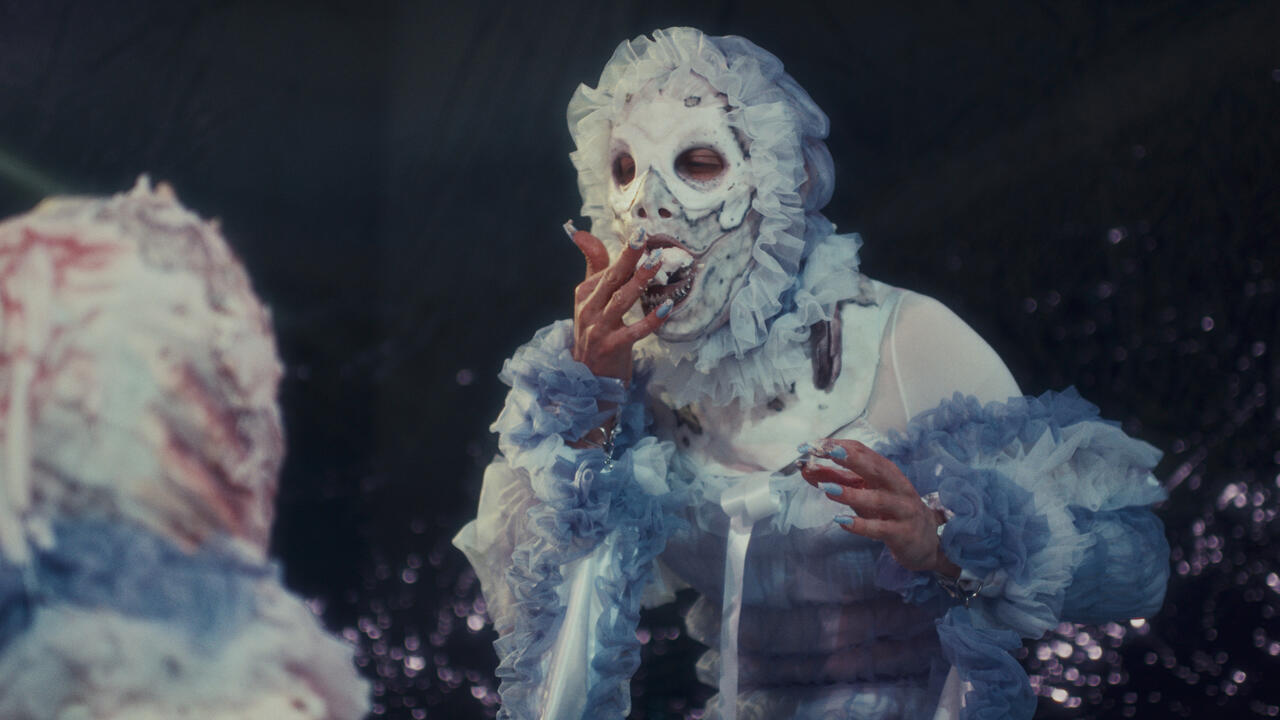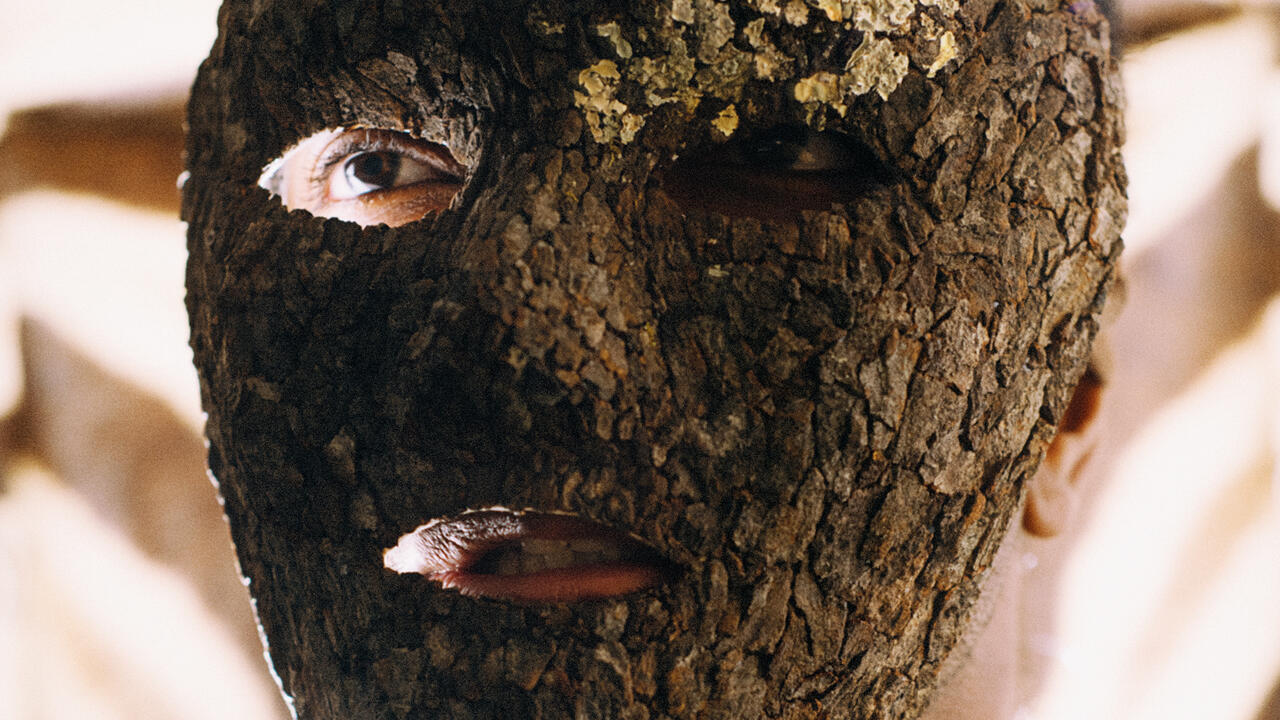Tony Matelli
Andréhn-Schiptjenko, Stockholm, Sweden
Andréhn-Schiptjenko, Stockholm, Sweden

The evening that Tony Matelli's recent show 'Total Torpor' opened, the United States Air Force dropped its first 4,500-pound GBU-37 bomb, the so-called 'bunker-buster', on a Baghdad target; the northern front was opened by 1,000 US Army paratroopers dropping into Kurdish-controlled territory; and Robert M. Rodriguez spent his last night on earth. A corporal in the 1st Tank Battalion, 1st Marine Division, Rodriguez was killed in action that evening along the banks of the Euphrates, the spine of early civilization. Seeing Sad Skulls (2003), one of three sculptures in Matelli's exhibition, it was impossible not to think of the imprecise but poignant coming together of an ancient culture and Robert's hard-as-nails death.
The sculpture comprises a stacked and balanced pile of perfectly bleached and lifelike skulls; the adult ones complete with busted and rotten molars and the baby ones complete with teeth snug in their elfin skulls. With a slight but deft alteration in bone structure, however, Matelli reversed death's grin into a good sulk, turning down the mouth at each end. The impression left was that while these departed souls must surely envy our flesh and blood, they are in unison with the voices of those early American tombstones where the dead speak from the grave, smugly reminding the living that we too will rot. Matelli's work has such an uncommon litheness that human skulls plastered with a scowl can mime 'misery in Disneyland' then hang a hard right in the direction of Pol Pot's home-made disaster, before throwing it all into reverse with a summons to imagine casualties of war.
This suppleness provides Matelli with uncanny lightness of touch in tiptoeing over the eggshells of art history, as we were reminded when he made a graceful touchdown atop Gustave Courbet, Jean-Honoré Fragonard and Jean-Antoine Watteau in The Wanderer, Hunter and Reverie (all 2002). Sad Skulls epitomizes the contemporary nature morte, and in Total Torpor, Mad Malaise (2002) the still life scattered around its base rivals the antique vanitas where mortal power inevitably curdles. On a dreary (but reasonably priced) nylon carpet, stock depressants, stimulants and venues for sexual fantasy have been strewn like so much used-up debris; empty beer cans, coffee cups and the wildly beloved catalogue of naughty nighties from Victoria's Secret. Taking a page from Pieter Claesz, Matelli quotes from the inventory of modern objects that symbolize the vanity of worldly pleasure and, of course, the brevity of life. However humble the array seems, it is made up entirely of excessive instruments of pride and temporary pleasure once in the hands of the misshapen nude who reclines on the platform just above.
This unappealing figure has been cursed with a nasty 'condition', sprouting shit-tinged, football-sized-tumours all over. Whether or not his pose is determined by the pain of the tumours, it seems crossed between blasé and deliberate. The carriage of this mess of a man is very nearly noble and awfully reminiscent of both the Classical sculpture of The Dying Gaul (3rd century BC) and Jeff Koons' sculpture of Michael Jackson and Bubbles. In a derailed spirit of the dying warrior, this ogre does nothing other than pass the time, but with less noble adventures; masturbating and beer swilling are not normally associated with the hero's anticipation of death. It is all entertaining: the flirting with art history, the black comedy and the Realist technical virtuosity. At a time when fine art is fumbling with its relationship to entertainment, Matelli's sculpture has been busy creating an audience for itself. Others have periodically attempted this, and despite the risk of insignificance and a purely low-brow appeal, there have been a few success stories, from William Wegman to Maurizio Cattelan - and Matelli is to be counted among them.
So who is this pathetic unfit icon whose life captures it highs via a few too many beers and imagining he is God's gift to Gisele Bundchen? It does not take much peering into the averting eyes of this figure to realize that it is undoubtedly a self-portrait, severely altered by gelatinous tumours, but more importantly a portrait where the artist converges as both subject and observer. I am thinking back to another vanitas tradition where the artist's distorted likeness is rendered guilty through collusion with worldly pleasure - reflected back in a silver plate, goblet or metal sphere (the Getty Museum has just such a painting from 1634, with an uncertain attribution to Pieter Claesz). Total Torpor, Mad Malaise provides as much insight into Matelli's regard for himself as into his understanding of his artistic mission. He leans into the lesson earlier recounted by Molière, Samuel Beckett and others, that for the comic to know success, it must first be at ease in the company of tragedy.
























